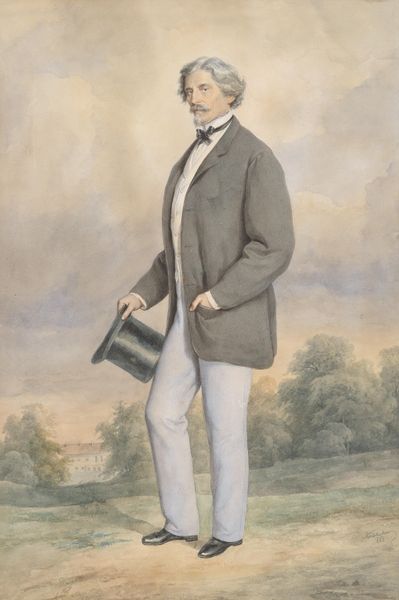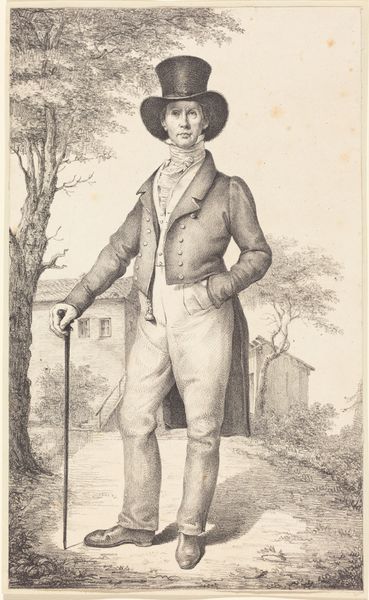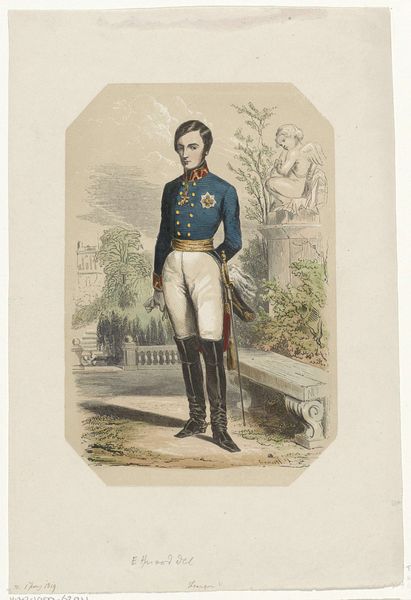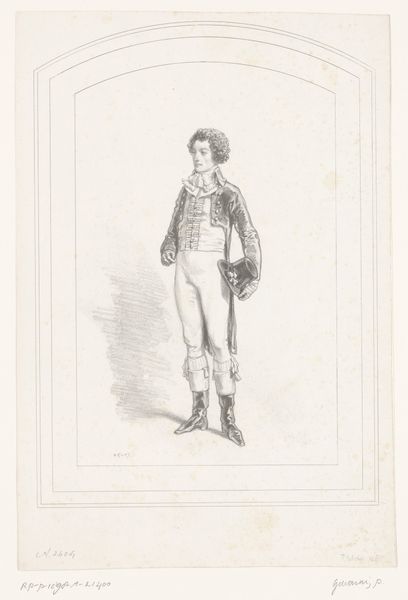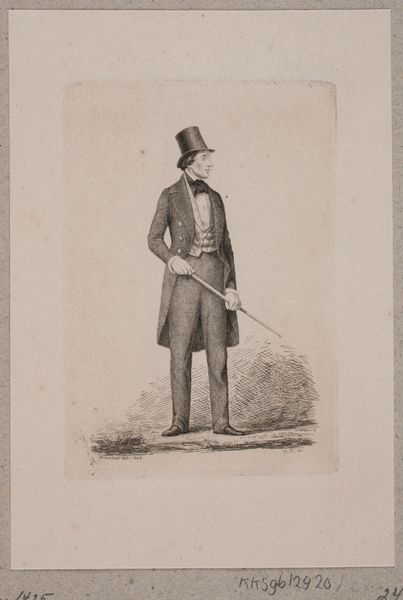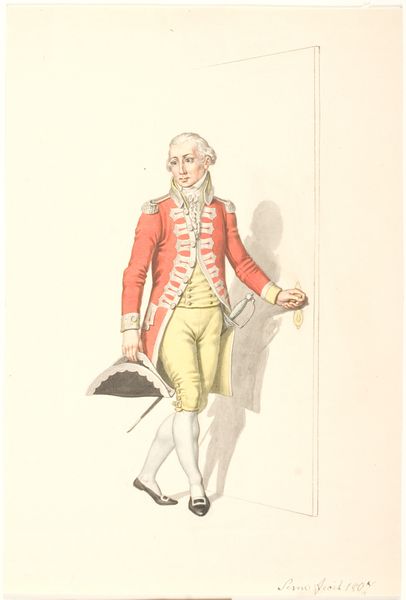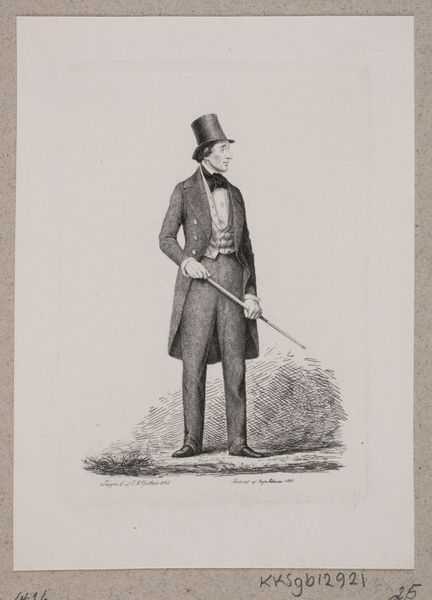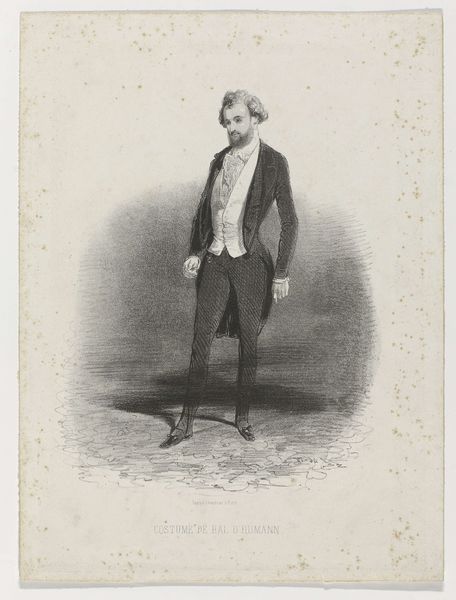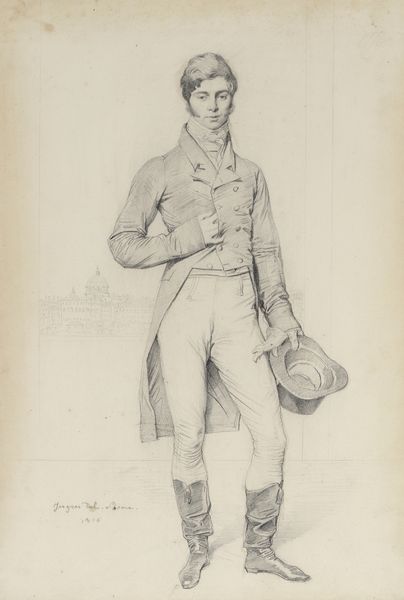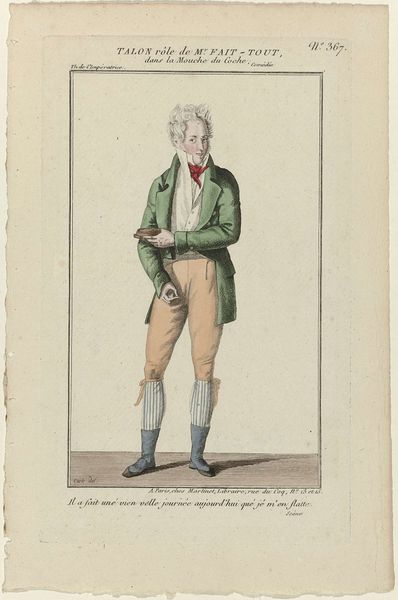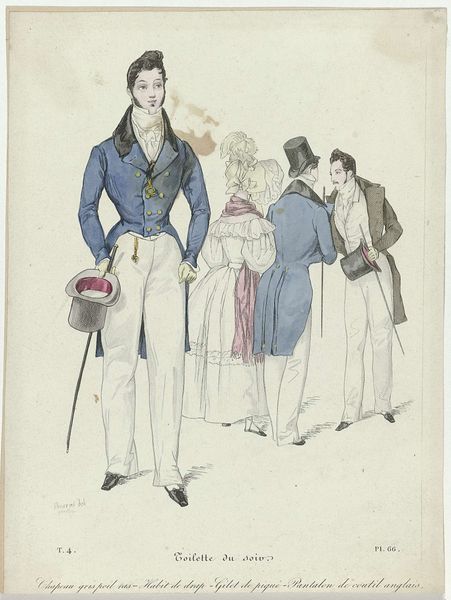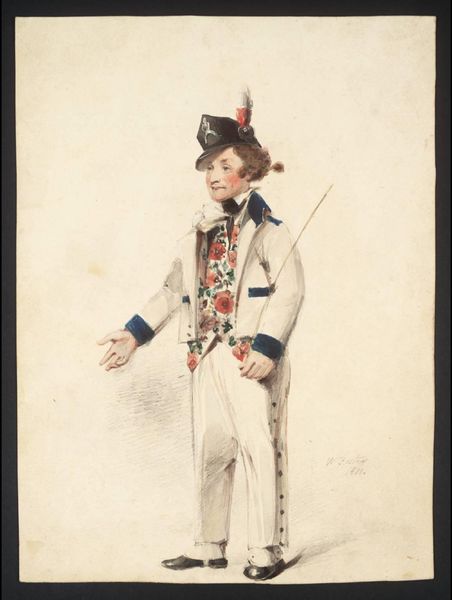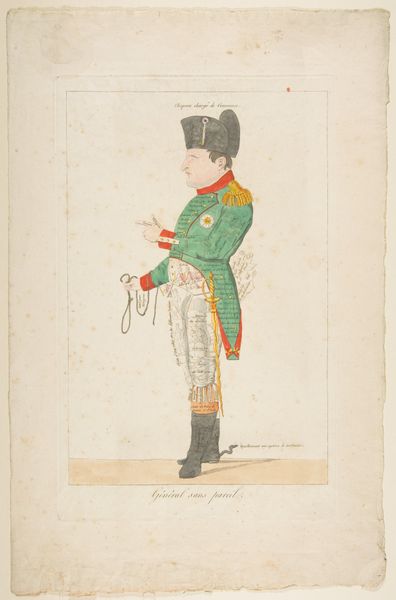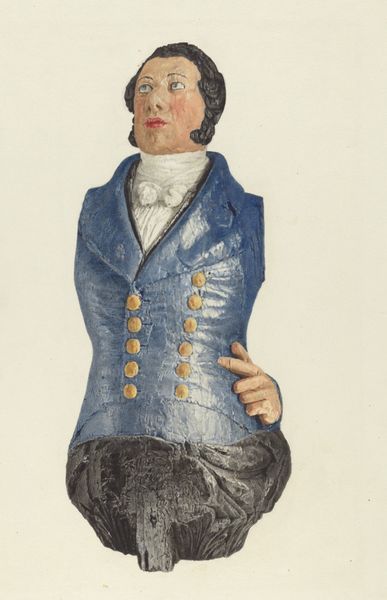
drawing, watercolor
#
portrait
#
drawing
#
figuration
#
watercolor
#
romanticism
#
portrait drawing
#
watercolour illustration
#
genre-painting
#
academic-art
Dimensions: 24 x 33 cm
Copyright: Public domain
Curator: Oh, my first thought is definitely a bit theatrical, isn't it? The bright red jacket and the affected pose give off that sense. Editor: Indeed. What we have here is "Gentleman in Riding Costume," a watercolor drawing from 1838 by Josef Kriehuber. Let’s consider it within its context; portraiture like this provided essential visual representation of social status. The riding attire signifies belonging to a leisure class with the means and social position for equestrian pursuits. Curator: Yes, exactly, the way the figure presents themselves tells a lot about the consumer this work was created for. You see it in the tailoring, that really particular cut of the coat. This isn't ready-to-wear, this is custom-made, highlighting the bespoke practices and labor behind such commissions. The blue silk scarf further indicates status as access to silk production at this time would require financial resources. Editor: And the backdrop too. While subtle, it alludes to a cultivated outdoor space, likely connected to a country estate. Kriehuber was a popular portraitist in Vienna, serving the aristocracy and the burgeoning middle class. These images served as visual markers of their ambition and social ascent. This image in particular seems caught between traditional aristocratic display and new bourgeois sensibilities. Curator: Right, it speaks volumes about the economic landscape shifting in Europe, right? We are observing the democratization of art collecting and displaying images. And I am looking at the rendering of those riding boots. It seems like a quick application of washes. He wanted to get these likenesses knocked out quickly. Editor: Definitely, we can’t underestimate how images of figures reinforced socio-political hierarchies of that moment in time. We observe carefully how power manifested and legitimized itself through visuals for the culture and consumers that followed suit. It would be good to explore these connections. Curator: Well, seeing the figure from a purely materialist view, I see this work really pointing to changing practices in portrait production during a transitional time. Editor: From a historical perspective, I agree that examining such pieces offers insight into society’s complex dance with aspiration and the perpetuation of symbolic capital.
Comments
No comments
Be the first to comment and join the conversation on the ultimate creative platform.
